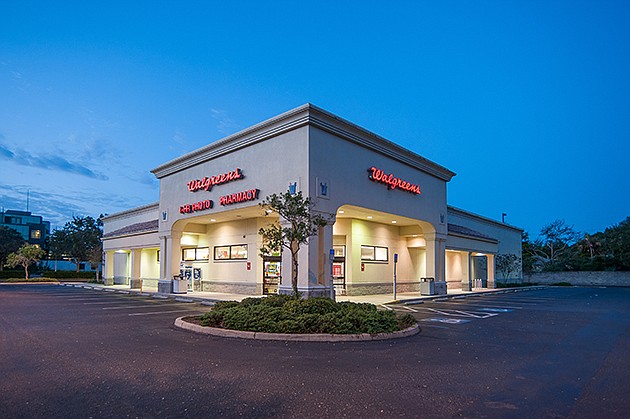- July 26, 2024
-
-
Loading

Loading

Walgreens will grow dramatically in size when its $17.2 billion acquisition of rival Rite Aid Corp. is finalized, especially in the Northeast.
But the corporate marriage announced in late October also will provide Walgreens with heightened buying power with suppliers, making it, in essence, the Wal-Mart of drugstore chains.
Analysts say that buying power should translate into lower prices for consumers, which will in turn aid the Deerfield, Ill.-based Walgreens in its effort to capture consumer dollars for food and other typical convenience store commodities.
“People are time-starved now, so anything that can be done easier or quicker, they gravitate toward,” says Patrick Berman, a senior director with commercial real estate brokerage Cushman & Wakefield of Florida Inc.'s retail services group.
“If you can knock out three or four errands at one time by going to a single store, that's good in the eyes of American consumers,” he adds.
Walgreens' purchase of Rite Aid comes as chains from Wal-Mart to Wawa to 7-Eleven and Starbucks are increasingly seeking to expand their offerings, and in many cases become “one-stop shops” for consumers, selling everything from groceries to dry goods traditionally purchased in grocery or discount stores.
Already, Walgreens is the largest drugstore chain in the U.S., with nearly $80 billion in annual sales and stores within five miles of 75% of all Americans, according to its website.
Its stores, which typically measure about 11,200 square feet, sell roughly 18,000 different items and are visited by more than 6.1 million customers daily, the website notes.
In Florida, the chain operates 840 stores, 12% of its total and the most of any state in the United States.
In Walgreens' case, the Rite Aid merger is part of a larger plan to further differentiate the chain by through sales of pharmaceuticals and related wellness brands. Company officials said they could not comment on the Rite Aid deal while it's pending.
Those in commercial real estate, however, say the strategy is a sound and popular one at a time when more and more merchants are chasing seemingly finite consumer spending limited by lackluster growth in wages in both the U.S. and Europe.
“It's not just about price point,” says Paul Rutledge, a first vice president with commercial real estate brokerage and services firm CBRE Inc. “It's about how do you get more people in your store to shop. People expect more now from retailers, they're trying to get an experience, beyond just buying a product.”
For its part, Walgreens aims to provide customers with “ultimate convenience,” its website states. The company also has acknowledged it hopes to differentiate its in-store experience through a focus on “health, wellness and beauty.”
“Convenience is No. 1 with them, and second is competitive pricing,” Berman says. “People don't want to spend a ton of money on anything anymore. And the third area of growth is in food, because everyone has to eat. If you can offer both convenience and competitive pricing for a commodity everyone needs, you can capture a percentage of those sales. It's a good strategy, and it's working.”
Rite Aid will boost Walgreens' total stores by more than 50%, to nearly 13,000 nationwide if the deal closes as anticipated next year, though some stores may be consolidated post-merger.
And Walgreens has already begun taking steps to provide shoppers with expanded product lines and merchandise, though much of its push has been in Europe.
Walgreens established that corporate beachhead late last year, when it consolidated an ownership stake in the Swiss-based Alliance Boots drug and pharmaceutical chain, which specializes in cosmetics and other high-end goods and wholesale medicine sales, respectively.
Walgreens Boots Alliance Inc., as the company is called now, boosted sales and profits by 35% and 33%, respectively, in its first financial reporting period post-merger.
Sales topped $100 billion for the first time as a result, further enhancing the combined company's buying power.
“Walgreens is making a good play,” Rutledge says. “Because again, people today want something intangible even when they're just out buying a product, something that provides cache. That's why you're seeing, and will see more, cosmetics and fashion in their stores. It's not just medical goods and prescriptions anymore.”
- K.L. McQuaid